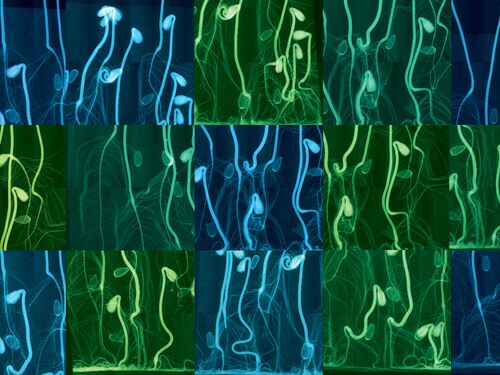Are all infectious diseases caused by viruses and bacteria?
Based on Science
Viruses and bacteria are not responsible for all infections diseases. Many infectious diseases are caused by viruses and bacteria. But there are also other types of pathogens that cause illness.
Last update May 20, 2022
Infectious diseases are often caused by pathogenic microbes.
Organisms too small to be seen with the naked eye are called microbes. Microbes that cause disease are considered pathogens. You get an infection when a pathogen enters your body and begins to multiply. Disease occurs when the cells in your body are damaged as a result of the infection and signs and symptoms of an illness appear.
Some infectious diseases are contagious, that is, they spread from person to person. That can occur, for example, through direct person-to-person contact, through contact with infected body fluids, or by inhaling respiratory droplets or aerosols breathed out by someone who has an infection.
Other infectious diseases are not contagious. People can get infected with these pathogens through contact with contaminated soil, water, or food or through contact with animals, such as from bites by mosquitoes or ticks.
Viruses and bacteria are the cause of some infectious diseases.
Some of the most well-known microscopic pathogens are the viruses and bacteria that cause many of diseases we hear about often and may have experienced ourselves.
Viruses are tiny packets of genetic material surrounded by a protein shell. They can only reproduce when they enter living cells. They make you sick when they enter your cells, multiply, and then spread to other cells to repeat the process. Viruses cause many illnesses, such as COVID-19, the flu, HIV, measles, the common cold, and rabies.
Bacteria are single-celled organisms that may live on their own or inside other organisms. Unlike viruses, they do not need a host to reproduce, but bacteria can reproduce inside your body because they are very adaptable. Many bacteria are helpful to human health, but some cause disease. Examples of illnesses caused by bacteria include strep throat, tuberculosis, tetanus, Lyme disease, and some types of food poisoning.
Other types of microbes can cause infections, too.
Protozoa are single-celled organisms that do not have cell walls. They reproduce mainly by splitting in two. You can get a protozoal infection through ingesting contaminated food or water or by being bitten by an insect that is carrying the protozoa inside it. Diseases caused by protozoa include malaria, giardia, and toxoplasmosis.
Fungi can be microscopic or very large. They reproduce mainly by making spores. Many fungi are beneficial to people and ecosystems, but some produce toxins or cause disease. You can get a fungal infection by inhaling or having other direct contact with fungal spores. Some fungi, such as Candida, normally live in or on the human body but can cause infections via excessive growth. Examples of illnesses caused by fungi include yeast infections, athlete’s foot, and histoplasmosis.
Prions are not living microorganisms―they are microscopic particles of protein―but they can be infectious. When prions come into contact with similar normal proteins in the body, they cause the normal protein to become misshapen. This contact and subsequent abnormal folding of the normal protein sets off a chain reaction that can cause prions to accumulate in the brain, eventually riddling it with holes and causing death. Diseases caused by prions include bovine spongiform encephalopathy (BSE) in cattle (also known as mad cow disease), chronic wasting disease in deer and related animals, and Creutzfeldt-Jakob disease (CJD) and variant CJD in humans. Much remains to be learned about how prion diseases emerge and spread, but transmission of CJD from an infected person to an uninfected person has occurred through infected tissue transfers and contaminated medical instruments. People have also developed variant CJD from eating meat from cattle with BSE.
Parasitic worms can also cause infectious diseases.
Parasitic worms, called helminths, are another kind of pathogen that can cause infectious diseases. Helminths include tapeworms, flukes, and roundworms. They need to live inside other organisms to complete parts of their lifecycle. Their eggs or larvae can enter your body through contaminated food or water, by penetrating the skin, from insect bites, or by touching contaminated surfaces. Once in the body, parasitic worms often grow and develop in the intestines, which can cause malnutrition and make you more susceptible to other diseases. Schistosomiasis, also called bilharzia, is an example of an infectious disease caused by a blood fluke. The roundworm Onchocerca volvulus is the cause of onchocerciasis, also known as river blindness.
There are steps you can take to reduce your risk of infection.
Infectious disease may be an unavoidable fact of life, but there are many strategies available to help us protect ourselves from infection.
Get recommended vaccines
Clean your hands frequently
Follow good food safety practices
Avoid bug and tick bites
Practice safe sex




